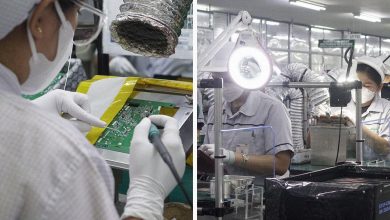< width="244" height="161" align="left" src=" graphika. " alt="" />How many designers does it take to screw a light bulb? Who knows, but it takes about 1,000 design enthusiasts to make up Graphika Manila 07, the international multimedia design conference held August 11 at SM Mall of Asia. Students and practitioners alike converged at the Centerstage for a visual smorgasbord from Michael Young (designgraphik.com), Christopher Lee (theasylum.com.sg), Julian Oh (huevisualab.com), Marcushiro+Bru (electrolychee.com), Steve Tirona (ricevisions.com) and Paul R. Z. Guadalupe (guadakomeda.com).
Inspiration lit up the audience so brightly you can practically see light bulbs popping over their heads. Live performances from Sound and Sino Sikat? added to the sensual overload.
On its second year, the annual event featured local and international artists ranging from digital photography to multimedia arts. adobo asked the speakers for their 10 cents on the graphic design scene.
adobo: What’s your design style?
Electrolychee: We are an illustration-based design studio. Our works play within the realms of slick, computer-generated vector art and organic hand-drawn imagery.
Paul Guadalupe: I dont really have a particular style…but I would say my expertise would be editorial design.
Michael Young: I worked for a company and we did a lot of web stuff and I got bored…So I draw, maybe one day play videogames, next day watch a movie, work 20 hours and finally go to sleep or something. I work pretty random. It’s like playing a little game all the time, trying to put things up. So when I felt like I’m getting really comfortable I move on to a new challenge.
Julian Oh: Motion graphics and animation is our core. That’s what we do; we don’t touch web or print. We do motion graphics for networks, shows, CDs and even TVCs. Anything that requires motion graphics and animation, that’s what we do.
adobo: What do you think of Filipino graphic design?
Electrolychee: Evolving. Growing. We still don’t have our own identity, but we’re slowly developing it. [We] Should learn to wean ourselves away from copying designs and focus on making our own.
Paul Guadalupe: I would say doin’ good every year and slowly penetrating the mainstream market…pero may mga “talangka” pa din. Yung tipong puna ng puna pero wala namang ginagawa para makatulong sa pag-unlad ng eksena ng graphic design dito sa ‘Pinas (but there are still people with crab mentality. The type that constantly criticizes but never does anything to help improve the graphic design scene here in the Philippines).
Michael Young: I’ve seen work from some of the local guys and some of the websites and I think it’s really cool stuff. And it seems like there were a lot of–even before in America–the idea is for being expressive and out-of-zone, not so design-y. It was more expressive. It’s cool seeing the Philippines being a lot more expressive…People are starting to find their selves in design.
Chris Lee: From what I’ve seen, a lot of them had gone really far. I see a lot of motion graphics…a lot are cool. I think Filipinos have really caught up with the rest of the world and I think you guys are good to inspire all the young ones.
adobo: How different is our local design scene from your city?
Julian Oh: I think we [Kuala Lumpur] have a pretty strong graphic design industry, a lot of young people just like in Manila. You could really see a lot of young people getting into it.
adobo: How does Asia stand with other design philosophies?
Electrolychee: It’s all the same, and it’s all different. It depends on the artist and is not contained or measured just by their race, color or country. Design is limitless, especially with the advent of technology. It’s the artist who chooses to absorb its nuances. Even two designers from the same street will probably have different takes on design, so what more if they come from the same city, region or country.
Chris Lee: In Singapore, there were a lot of British, a lot of Australians, Americans…they come to Singapore, and they win a lot of awards and become creative directors. Slowly, you see a lot of Singaporeans now becoming creative directors. The young creatives eventually become the top guys. Singapore has become the industry that the Philippines has so I’m sure the Philippines can become a powerhouse anytime.
Julian Oh: Design trends in the West and in Asia are a lot different. It has a lot to do with culture. If you want to compare, maybe we’re a bit left behind because we’re always following the trends from the West. But I do believe that in our world there’s still an essence of Asian culture, and we should hold on to that.









